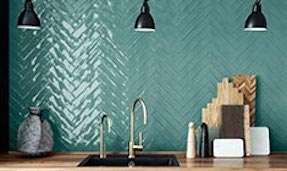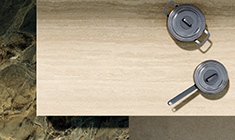How has the contemporary lounge changed? What functions does it fulfil within homes and how should furnishings be organised to get the best from it?
Nato come ambiente di rappresentanza all’interno delle dimore nobiliari, il salotto vero e proprio – inteso come stanza separata e dedicata al relax e alla convivialità – è ormai rarissimo. Riadattando il significato alla realtà degli interni contemporanei, potremmo più identificarlo come una funzione all’interno di un ambiente più ampio, o quantomeno destinato a trasformarsi a seconda delle esigenze e dell’orario della giornata.
Molto più spesso il salotto convive con il soggiorno, che include anche la zona pranzo (un tempo la sala da pranzo era anch’èssa separata), o – ancora più frequentemente – con la cucina: oggi parliamo sempre più spesso di living, utilizzando un termine anglosassone che identifica un ambiente generalmente vissuto durante le ore del giorno da tutta la famiglia.
Arredare un soggiorno moderno: cosa non può mancare
Concentrandoci unicamente sull’area relax, ovvero su quella che oggi sostituisce il salotto vero e proprio, possiamo rapidamente individuare gli elementi immancabili nell’arredamento:
- sedute comode: divani, poltrone, pouf, chaise longue, amache… qualsiasi cosa agevoli il relax e permetta di leggere, guardare la tv, chiacchierare o rilassarsi da soli o in compagnia;
- tavolino/i o elementi d’appoggio per bevande, libri, device o qualsiasi altra cosa si utilizzi in salotto;
- libreria o mensole per libri, dischi (ritornati di gran moda) e cd (per chi ne ha ancora), o banalmente un ripiano dove appoggiare le casse bluetooth collegate ai dispositivi personali;
- smart tv o proiettore per trasformare il salotto in cinema privato o godersi le proprie serie preferite.
Al di fuori di questo elenco potremmo menzionare anche le piante: pur non essendo certamente immancabili per tutti, sono un elemento d’arredo dal grande impatto estetico e alcune di esse sono in grado di migliorare la salubrità dell’aria interna.
Come disporre gli arredi in salotto?
La distribuzione degli elementi all’interno del salotto va stabilita in base alle esigenze funzionali e alle preferenze di chi abita la casa: l’ideale è affidare questo compito così importante a un/a professionista progettista, che sappia coniugare elementi tecnici e stilistici mediandoli con le richieste della famiglia.
Attenzione ad alcuni errori in cui è facile cadere:
- non considerare gli spazi di passaggio o accesso alle finestre, porte e/o portefinestre;
- non individuare (e valorizzare) un punto o elemento focale – che farà da protagonista dell’ambiente;
- non stabilire priorità tra le funzioni. Cosa significa?
- Se, per esempio, il salotto viene utilizzato anche per lavorare è fondamentale prevedere uno spazio apposito.
- Se, ancora, in casa si ospitano spesso amici e parenti è importante prevedere più sedute, di diverso tipo, anche multifunzione o salvaspazio.
- Se la tv non è usata così frequentemente, inutile fare in modo che le sedute siano tutte rivolte verso di essa: al contrario, ha più senso progettare una zona relax/conversazione che solo all’occorrenza viene orientata verso lo schermo.
- In casa ci sono bambini? Il salotto va pensato anche per loro, in modo che abbiano uno spazio giochi da organizzare e riordinare a fine giornata.
E così via.
A seconda della posizione di porte e finestre, e una volta individuate le funzioni che il salotto avrà, si dispongono le sedute e gli arredi in modo che siano coerenti con il progetto della stanza. Molto spesso dimensione e forma del divano condizionano la distribuzione del resto degli arredi: gli spazi rimanenti possono essere organizzati in modo più flessibile.
Quando soggiorno e salotto si fondono: il living moderno
Nella maggior parte degli appartamenti contemporanei il salotto è parte integrante del soggiorno, pertanto ingloba anche la zona pranzo.
In questi casi è molto importante progettare attentamente gli ambienti, per delimitare le funzioni anche quando non ci sono pareti divisorie.
La disposizione dei mobili del soggiorno, in questo caso, deve essere coerente con l’obiettivo di definire gli spazi senza chiuderli in modo fisico.
Via libera quindi agli arredi multifunzione, che possono separare mentre fanno da contenitori o piani d’appoggio. I mobili della sala da pranzo possono separare, contenere, fare da ripiano tv: l’importanza del progetto è cruciale.
Delimitare e definire spazi e funzioni: decorare il salotto con le piastrelle
Proprio in questi casi, quando gli spazi sono fluidi e versatili e gli open space diventano la regola, il pavimento può diventare un elemento cruciale, sia dal punto di vista decorativo che funzionale. Grazie all’infinita varietà di formati ed effetti materici, il gres porcellanato rappresenta oggi una valida scelta progettuale, grazie alla quale modificare la percezione degli ambienti e arredare, ancor prima di inserire i mobili.
Scopri tutte le collezioni Marazzi dedicate al salotto







































































